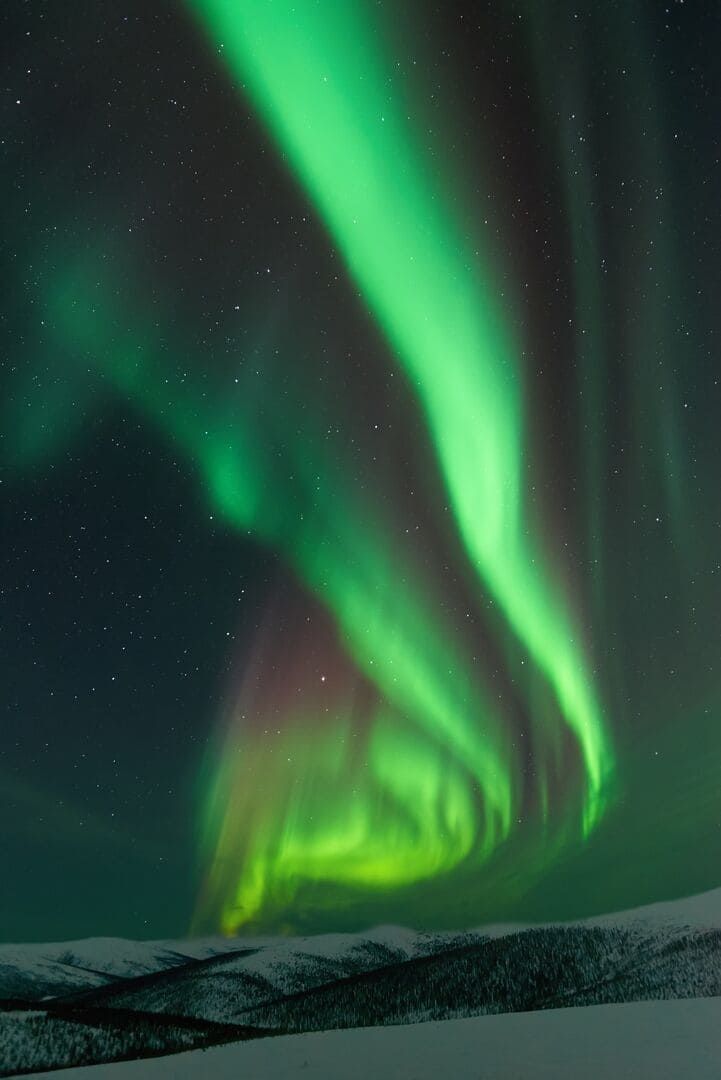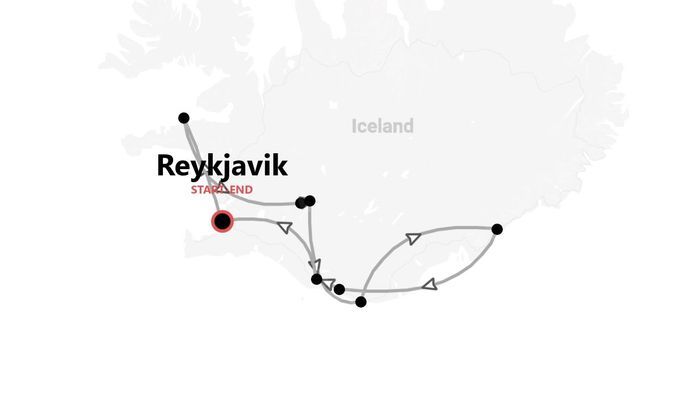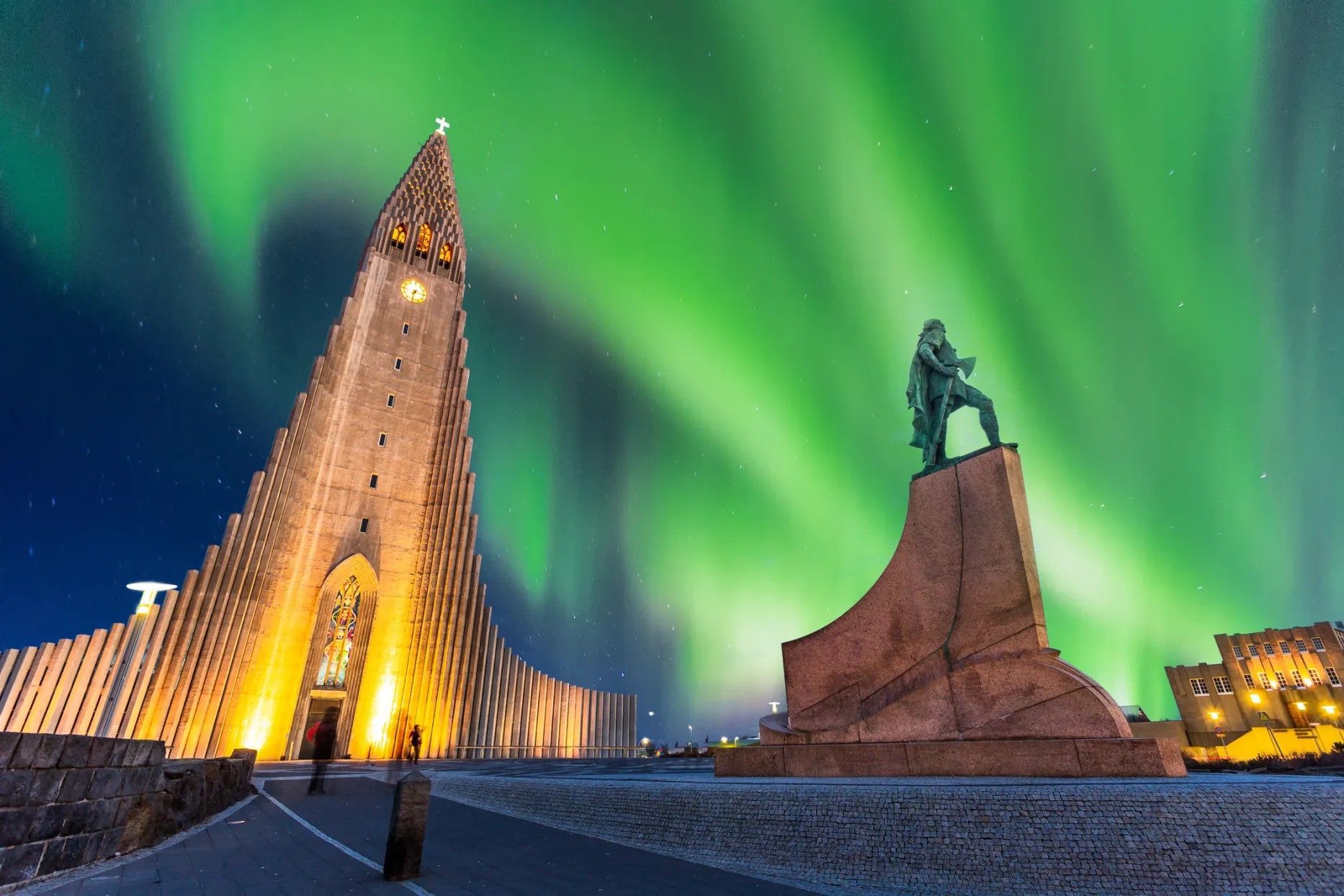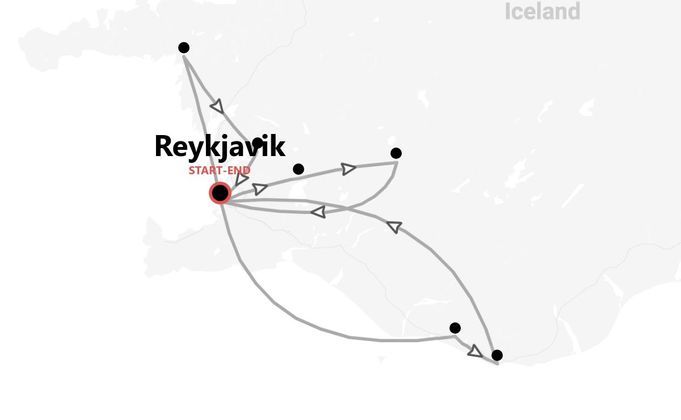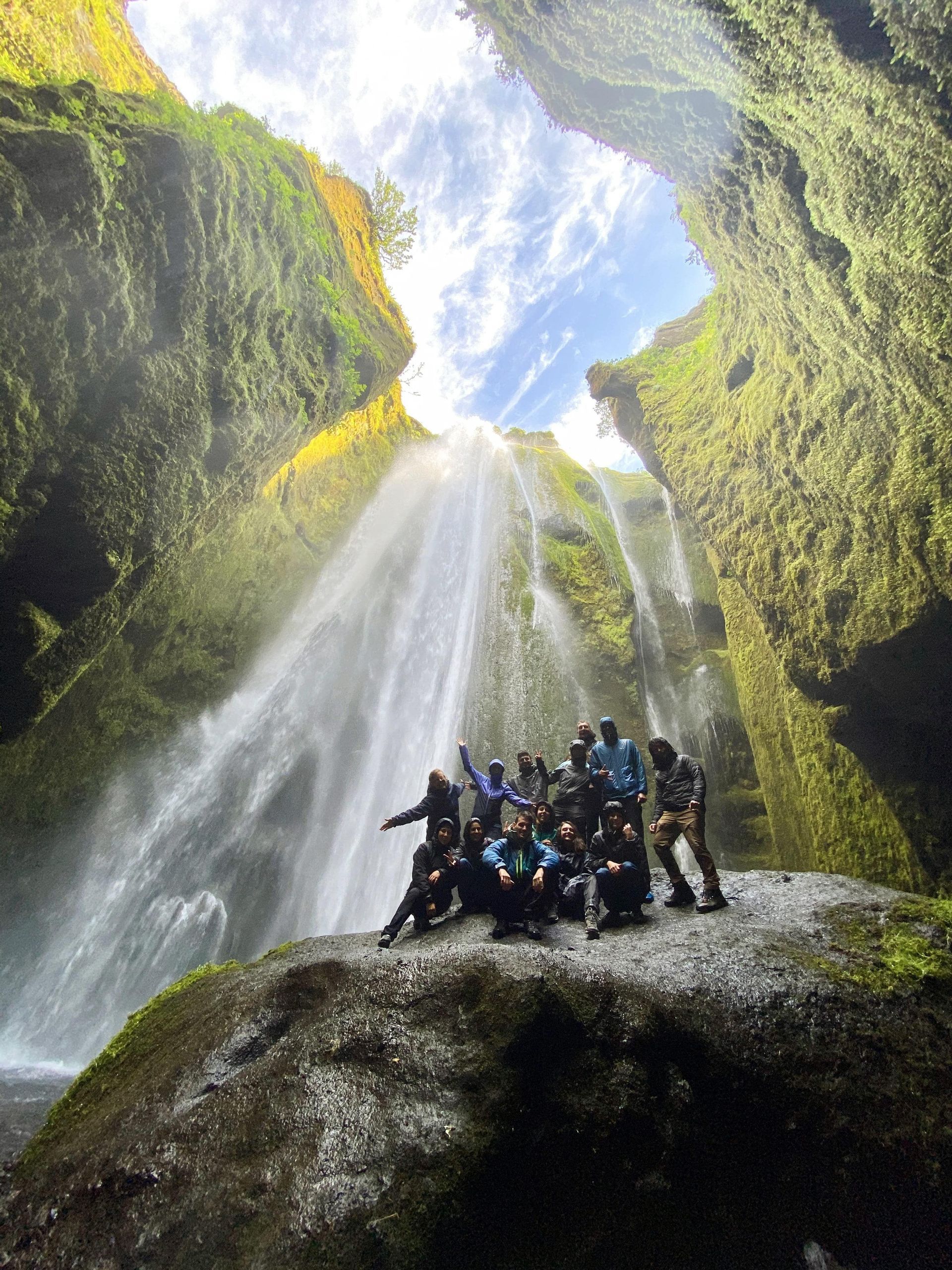
Group trips to Iceland
Our organized trips to Iceland
Volcanoes, thermal springs, powerful waterfalls, immense valleys, paths in the midst of unspoiled nature: the Land of Ice and Fire is freedom, pure air, strength, and discovery.
FAQs about Iceland
If you are a UK citizen, to find out the entry requirements for Iceland, you can check this informational page from our partner Sherpa. If you need a visa, you can apply for it through Sherpa. If you are not a UK citizen, you can still use Sherpa by changing the nationality in the 'Passport' section.
Before traveling, always remember to check the government website of your country of origin for updates on the entry requirements for Iceland – you wouldn’t want to stay home due to a bureaucratic detail!
- UK residents: review the FCDO Travel Advice.
- US residents: consult the US Department of State Travel Advice.
- Other residents: refer to your government or local consulate's travel advice.
Iceland is in the Greenwich Mean Time (GMT) zone and does not observe daylight saving time. This means that the time in Iceland stays the same throughout the year.
The United Kingdom, on the other hand, switches from GMT to BST (British Summer Time), moving the clock forward by one hour during the summer months. This means that, during this period, when the UK observes daylight saving time, Iceland will be one hour behind the UK.
Iceland's currency is the Icelandic Króna (ISK). If you're traveling to Iceland, you can exchange your money at:
- Banks
- Currency exchange offices
- Airport upon arrival
Many places also accept credit cards, so you might not need too much cash on hand.
Credit and debit cards are widely accepted in Iceland, so you can easily use them for most purchases. Contactless payments are common, and you might find that using a card is more convenient than cash. ATMs are also readily available if you need to withdraw cash. For smaller transactions, like at local markets or smaller establishments, it might be useful to have some Icelandic Krona on hand. We suggest you notify your bank about your travel plans to avoid any issues with card transactions abroad.
In Iceland, tipping is not expected, as service charges are usually included in the bill. However, if you receive excellent service and want to show appreciation, rounding up the bill or leaving some extra change is perfectly fine.
Tipping in taxis is also not expected, but rounding up the fare is appreciated. Remember, tipping is always at your discretion and never obligatory.
Staying connected to the internet in Iceland is pretty straightforward. Most towns, hotels, and cafes offer free Wi-Fi, so you can easily hop online. If you have an EU mobile plan, you can use your phone's data without extra charges thanks to roaming agreements. For more remote areas, consider getting a local SIM card from one of the major providers like Siminn or Vodafone at the airport or in Reykjavik. This will keep you connected even when exploring Iceland's stunning landscapes.
In Iceland, the official language is Icelandic. It's a unique and ancient language, but English is widely spoken, especially in tourist areas. Here are some useful Icelandic phrases you might hear or use:
- Hello: Halló
- Thank you: Takk
- Goodbye: Bless
- Please: Vinsamlegast
These can help you get by during your visit.
In Iceland, you'll find Type C and Type F electrical sockets, which are the same as in much of Europe. They operate on a 230V supply voltage and 50Hz. If your devices are from Central Europe, you likely won't need a plug adapter.
However, it's always a good idea to check your device's voltage compatibility to avoid any surprises. Consider packing a universal adapter just in case, especially if you have devices with different plug types.
The main religion in Iceland is Christianity, with the majority of Icelanders belonging to the Evangelical Lutheran Church of Iceland. There are no specific dressing requirements related to religion, and Iceland's society is generally quite secular. Though Christianity is predominant, you'll also find a growing number of people practicing other religions or identifying as non-religious. Notable religious holidays include Christmas and Easter, which are widely celebrated with public festivities.
When packing for Iceland, be prepared for unpredictable weather and varied activities. Here's a quick guide to help you pack your backpack:
-
Clothing:
- Waterproof jacket and pants
- Warm sweaters
- Thermal base layers
- T-shirts
- Warm hat and gloves
- Scarf
- Swimsuit for hot springs -
Shoes:
- Waterproof hiking boots
- Comfortable walking shoes
- Flip-flops for hot springs -
Accessories and Technology:
- Universal adapter
- Camera with extra batteries
- Portable charger
- Sunglasses
- Travel guidebook -
Toiletries and Medication:
- Travel-size toiletries
- Lip balm
- Moisturizer
- Sunscreen
- Pain relievers like ibuprofen
- Motion sickness tablets
Iceland's weather can be quite unpredictable, so it's always good to be prepared for sudden changes.
Iceland's weather is famously unpredictable, but here's a general idea:
- South Iceland: Mild winters and cool summers. Winter temperatures are around 0°C (32°F), while summers can reach 10-15°C (50-59°F).
- North Iceland: Colder than the south. Winter temperatures can drop below -10°C (14°F), and summer temperatures are usually between 5-10°C (41-50°F).
- Highlands: Harsh and cold, especially in winter. Often inaccessible during winter months due to snow.
The best time to visit is from June to August when the weather is milder, and you can enjoy the midnight sun. Always pack layers, as conditions can change rapidly.
In Iceland, daylight hours vary dramatically throughout the year due to its northern location.
During the summer months, especially around June, you can experience nearly 24 hours of daylight, known as the Midnight Sun.
In contrast, during the winter months, particularly in December, daylight is limited to just a few hours, with long, dark nights. For example, in December, you might only get about 4-5 hours of daylight, while in June, it's mostly light around the clock.
Keep in mind that if it is 12pm in Central European time, it will be 11am in Iceland as they are one hour behind and do not observe daylight saving time.
The best time to catch the Northern Lights in Iceland is from late September to mid-April. During these months, the nights are longer and darker, increasing your chances of witnessing this spectacular natural phenomenon. Keep in mind that clear skies and minimal light pollution are crucial for a good view. If you're planning your trip around Central European time, note that Iceland is one hour behind, so if it's 12pm in Central Europe, it's 11am in Iceland. Be sure to dress warmly as temperatures can be quite chilly during these months.
